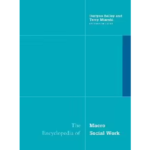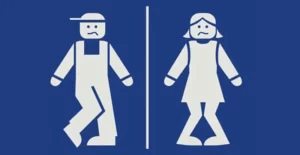Toward a Hybrid Model for Effective Organizing in Communities of Color
Catherine Bradshaw, MSW Steven Soifer, MSW, PhD Lorraine Gutierrez, PhD, ACSW
SUMMARY. This paper examines the feminist and Alinsky approaches to community organizing, both of which have had a great impact on the field of organizing. Viewing the two models as flexible and interflowing, the authors then propose a hybrid organizing model that draws from the strengths of both approaches. The model also calls for continual assessment of the changing organizing context and flexibility to change the blend of strategies according to the needs of the moment. Finally, the paper looks at how the dynamics of race and ethnicity affect organizing in communities of color and
Catherine Bradshaw is a trainer specializing in cultural diversity and supervisory skills for Western Washington University.
Steven Soifer, formerly Assistant Professor of Social Work at the University of Washington, is now Director of Community Organizing for the Central Vermont Community Action Council, Inc. in Barre, VT.
Lorraine Gutierrez is an Assistant Professor of Social Work at the University of Washington.
Address correspondence to: Lorraine Gutierrez, School of Social Work, 4101 15th Avenue NE JH-30, University of Washington, Seattle, WA 98195.
The authors would like to acknowledge the contributions that Gary Delgado of the Center for Third World Organizing and Donna Reid of the People of Color Against AIDS Network made to this article.
[Haworth co-indexing entry note): “Toward a Hybrid Model for Effective Organizing in Communities of Color.” Bradshaw, Catherine, Steven Soifer, and Lorraine Gutierrez. Co-published simultaneously in the Journal of Community Practice (The Haworth Press, Inc.) Vol. 1, No. 1, 1994, pp. 25-41; and: Diversity and Development in Community Practice (ed: Audrey Faulkner, Maria Roberts-DeGennaro, and Marie Weil)The Haworth Press, Inc., 1994, pp. 25-41. Multiple copies of this article/chapter may be purchased from The Haworth Document Delivery Center [1-800-3-HAWORTH; 9:00 a.m. – 5:00 p.m. (EST).
© 1994 by The Haworth Press, Inc. All rights reserved.
Page 1
| DIVERSITY AND DEVELOPMENT IN COMMUNITY PRACTICE |
discuss the usefulness of the proposed model in dealing with these dynamics.
KEYWORDS. Ethnic communities, feminist organizing, social action, advocacy, indigenous leadership, community organizers, diversity, leadership development, community practice models
During the past several decades, community organizers have begun to reflect more deeply on the various community organizing models (Fisher, 1984). These models have evolved into several distinct ones, such as the Alinsky model, the neo-Alinsky model, and the feminist model. Some suggest that the Alinsky model and the feminist model are antithetical. This article, however, argues that these models are not separate approaches, but that parts of each can be combined to create a flexible hybrid model of community organizing which would be effective in working with communities of color.
THE ALINSKY APPROACH TO ORGANIZING
It is impossible to ignore the role that Saul Alinsky’s (1969, 1971) brand of political activism has played in shaping community organizing in the United States. His pragmatic, single-issue approach; his emphasis on confrontational tactics; his focus on winning concessions from the power structure through whatever means necessary; and his view of the organizer as an expert working for the community have all been adopted by many activist organizations. The well-documented successes of this social action approach have been in Alinsky’s own Back of the Yards project and other similar groups, the Alinsky-founded Industrial Areas Foundation (IAF) and its successful programs such as the Citizens Organized for Public Services (COPS), and various neo-Alinsky organizations like the Association of Community Organizations for Reform Now (ACORN), Citizen Action (CA), and National People’s Action (NPA) (Boyte, 1980 & 1984; Delgado, 1986a & 1986b; Lancourt, 1979).
Alinsky preached that the organizer who is a catalyst, agitator, strategist, negotiator, and highly trained professional must
Page 2
| Bradshaw, Soifer, and Gutierrez |
ground the organizing effort in what Rude (1980) calls “inherent ideology,” or perceived self-interests of the community. For Alinsky, “self-interest was the generating reality of life” from which all movements for change took place (Miller, 1987, p. 12). His approach devalues ideology but places great importance on tactics that aim to identify and win concessions from the power structure of the opposition. In the Alinsky school, winning a political struggle is considered the principal tool for empowering communities; thus, there is more emphasis on the product of winning than on the means used to get there. Alinsky lived by “the tactical rule that negatives become positives” (Alinsky, 1971, p. 144). For him, any means, short of violence, justified the end or, as Alinsky himself stated (1971), “to say that corrupt means corrupt the ends is to believe in
the immaculate conception of ends and principles” (p. 24). Indeed, Alinsky was known for his drama and irreverence, employing any means necessary-manipulation, surprise tactics, and threats—to gain concession from the opposition. Through such tactics, Alinsky “sought to increase militancy by polarizing the situation, by targeting the enemy, and by developing a situation in terms of ‘good guys’ and ‘bad guys’ (Perlman, 1984, p. 48). This style of organizing, of course, has led to charges that Alinsky’s model is elitist in nature.
Perhaps the most explicit example of Alinsky’s tactics was the infamous “shit-in” at Chicago’s O’Hare Airport. When commitments made by the city to The Woodlawn Organization were not being met, Alinsky organized the group around a threat to occupy all of the toilets in the O’Hare Airport, thereby threatening to tie up commuter traffic and potentially throw the system into chaos. As Alinsky (1971) recounts, “the threat of this tactic was leaked . . . back to the administration, and within forty-eight hours The Wood- lawn Organization found itself in conference with the authorities who said that they were certainly going to live up to their commitments” (p. 143).
The Alinsky model prescribes that the organizer builds and grooms the indigenous leadership. An important step, then, is to identify and unify existing community groups such as churches, union locals, and clubs. As Boyte (1980) points out, however, Alinsky “drew a sharp distinction between the ‘organizer’ who staffed a
Page 3
| DIVERSITY AND DEVELOPMENT IN COMMUNITY PRACTICE |
‘people’s organization’ and the indigenous leadership of the group” (p. 51); the organizer clearly worked for, rather than with, the community. Thus, while leadership development was key to the process, the organizer held the power to shape it as his (or in rare cases, her) expertise saw fit. Indeed, much criticism has been aimed at the role that Alinsky delineated for the organizer. Hyde (1986) points out that “Alinsky believed that an organizer needs to be adept at all phases’ (p. 551), though this easily engenders dependency on the organizer, leads to burnout on the part of the organizer, and stifles
the organizer’s process of leaming from the community. The status of the organizer as an expert-led to problems in a number of Alinsky-style organizations. According to Boyte (1980), “Despite Alinsky’s pro-fessed intention to develop indigenous leadership, the organizations he built and inspired frequently were staff-dominated . . . Many Alinsky-style organizations have broken apart because of conflicts that stemmed from leadership-staff tension” (p. 64).
While the Alinsky model has led many communities to greater economic power, it has often been criticized for failing to hold out a vision of fundamental social change (Miller, 1987; Fisher & Kling, 1987). Says Miller (1987): “Strong on technique, the vision of the new society was nowhere to be found in Alinsky’s perspective” (p. 17). Given the centrality of such visions to the civil rights and feminist movements, it is not surprising that Alinsky scomed the New Left and Black Power movements, and by 1966, “had vowed never again to become involved in organizing with blacks” (Miller, 1987, p. 15). Alinsky’s non-ideological approach was clearly not appropriate for many of the movements that were generated by the
climate of the late 1960s through the 1980s such as the anti-war, environmental, gay rights, feminist, and abortion rights movements. While such movements were galvanized in part by a vision of a new society, Alinsky’s non-ideological model takes a pluralistic approach to organizing communities around issues of self-interest. Low and moderate-income people then fight for a limited piece of the pie against other interest groups, sometimes winning and sometimes losing.
In this process, the community’s and individual’s personal issues become separated from the broader political content. In contrast to the feminist model discussed below, the implicitly male approach of
Page 4
| Bradshaw, Soifer, and Gutierrez |
the Alinsky model views the personal issues of community members as irrelevant to the organizing process. Organizers are trained to avoid personal sharing, and weaknesses are masked at all costs. Issues of racism, classism, ageism, sexism, heterosexism, and authoritarianism that may arise between the organizer and the community are usually avoided.
FEMINIST ORGANIZING
Searching for alternative approaches, a number of organizers have developed a style of organizing that values the feminist process over the goal of winning. This organizing process reflects the ideology of feminism, thereby valuing nurturing, consensus decision-making, and collaboration. The aim is to raise constituents’ political consciousness and to challenge the existing patriarchal capitalist system. The holistic approach of this model attempts to integrate the personal and the political and the notion of community with the crucial issues of the larger society. The organizer’s role is one of enabler, facilitator, and leamer, with the aim of empowering community members to lead their own growth process (Brandwein, 1981 & 1986; Hyde, 1986 & 1989; Joseph et al., 1989; Weil, 1986).
One of the key elements of feminist organizing is its holistic approach to working with communities. This affects practice in several dimensions. First, it aims to eliminate the dichotomies that are often created between the community and the power structure and between the organizer and the community. As Ellsworth, Hooyman, Raff, Stam, and Tucker (1982) put it, “a feminist model aims to demystify the planning process, to eliminate the expert-nonexpert dichotomy” (p. 148). The target of change, that is, the power structure, is not seen as the enemy, but rather as a potential collaborator toward a win-win situation. The tactics must be ethically sound and peaceful because how the oppressed decide to attempt to change the oppressor is crucial (Friere, 1988).
The feminist credo that the personal is political is a logical extension of the above principle. Feminist organizing aims to raise people’s awareness of how their actions are interrelated with the structural conditions of society. As Gould (1987) points out. “changes in individuals and social institutions are simply two aspects of the same process” (p. 14).
Page 5
| DIVERSITY AND DEVELOPMENT IN COMMUNITY PRACTICE |
The aim of consciousness-raising is praxis, that is, understanding the interplay between theory and practice that ultimately shapes our reality. For feminist organizers this ties in with the attention to process as it reshapes our social reality.
The feminist approach also views the organizer as an equal to the community. Rather than being an expert at all facets of organizing, the organizer both leams from and gives to the community. In reviewing accounts of women activists, Hyde (1986) notices that “there was an overwhelming sentiment that while an organizer can offer something to the organizing effort, the effort serves as an educational experience for the organizer” (p. 551). This approach also diminishes the power differential that can exist between the organizer and the community and helps to break the dependency that is a natural result of hierarchical relationships.
An important element of the feminist model is its aim to celebrate the differences between community members while it strives for unity through diversity. As Brandwein (1981) states, “feminist organizers will affirm the variety and diversity of women’s experiences and will work to synthesize and build unity that transcends diversity” (p. 202). Many feminist groups, however, have been criticized for falling short of this ideal (Gutierrez & Lewis, 1992).
Along another dimension, the holistic approach works simultaneously with the emotional, spiritual, and intellectual needs—and strengths—of both community members and the organizer. Hyde (1986) points out that “an organizing effort should not focus solely on what is being done. It also needs to incorporate the intellectual and emotional needs of individuals and the collective” (p. 551). According to Gutierrez and Lewis (1992), “It involves both the rational and non-rational elements of human experiences. Emotions, spirituality, and artistic expression are both used as tactics for unifying women and expressing issues” (p. 6).
Another important characteristic of the feminist model is its focus on the process of organizing. According to Bricker-Jenkins and Hooyman (1986), “process is seen as an important product in and of itself, and its production through nonoppressive means builds culture . . . thereby demonstrating the viability of the value set and ensuring its survival” (p. 13). Ultimately, then, the product is affected by the process, for organizing process that reflects collaborative, democratic,
Page 6
| Bradshaw, Soifer, and Gutierrez |
egalitarian values ultimately move the large culture toward the same principles. Indeed, ideology and a vision of broad social change—the elimination of patriarchal society—is a basic element of feminist organizing. While ideology and vision were shunned by Alinsky, feminists consider them to be key forces behind mobilizing communities.
The feminist approach views power very differently from the traditional Alinsky model. Rather than being seen as a finite resource that must be gained from the other, power is “rooted in energy, strength, and effective communication, and it is limitless. Indeed, power expands, becoming increasingly collective and inclusive (Bricker-Jenkins & Hooyman, 1986, p. 12). With this perspective, competition becomes unnecessary and groups can move toward a collaborative solution in which both parties become empowered.
The feminist model of community organizing is not without its shortcomings. The very aspects that give it strength also pose difficulties. For example, as it strives to eliminate dichotomies and achieve unity, it has been criticized for a lack of attention to the diverse needs of multiracial groups. Gould (1987) points out that in its zeal for “sisterhood” and “women as one class,” the largely middle-class white feminist movement “glossed over many differences in women’s social realities—class, race, and sexual preferences” (p. 13).
The focus on consensus-building and participatory organizing places a great demand on time and creates intense stress from the high level of commitment required. Furthermore, Hyde (1989) points out that “this demand for high commitment creates a pressurized situation in which decisions and actions often get controlled by an unacknowledged elite” (p. 21). This problem is also exacerbated by the feminist principle of egalitarianism, which tends to ignore the natural development of leaders who then informally dominate the process with little or no accountability (Joreen, 1973).
A MODEL DEVELOPED FROM MIXING AND PHASING
On the surface, the two models discussed above appear to be quite opposite. The Alinsky model views the organizer as an expert who must identify the community’s leadership, while the feminist model
Page 7
| DIVERSITY AND DEVELOPMENT IN COMMUNITY PRACTICE |.
considers the organizer to be a facilitator and leaner who helps the community define its leadership as it organically develops. The former focuses on winning over the power structure, while the latter places greater importance on the process that the community uses to work toward change. Yet the two models of practice share certain important qualities, not the least of which is that they both strive toward the basic goal of empowering communities. While the means of accomplishing this are different, each model has important strengths that are effective in empowering communities in appropriate organizing situations.
Following Rothman’s and Tropman’s (1987) classic discussion of mixing and phasing of community organizing approaches, which is often used in community organizing classes in schools of social work, we strongly suggest that in the fluid environment of community organizing, practitioners will benefit from treating the Alinsky and feminist models as flexible and interflowing. While the Alinsky model falls nicely into the social action model, the feminist model seems to fit relatively well into the locality development model (Rothman, 1990). The organizer must be knowledgeable about and skilled in the various models to be able to practice a “purposeful and skilled mixing of different strategies” (Rothman & Tropman, 1987, p. 5). That is, each organizing situation calls for a unique and deliberate blend of techniques from various organizing models. The organizer’s ability to recognize the phasing quality of organizing and to be able to remix the blend of strategies according to the changing environment is equally important.
The following organizing model is proposed as one that mixes some of the strengths of both the feminist and Alinsky approaches. This model should be seen as flexible and able to incorporate alternative elements according to the changing organizing context. The critical step to this approach, of course, is thorough research and understanding of the community and a sensitivity to its changing needs. Finally, we consider the model to be an effective approach to working with the unique needs of communities of color. Its application in such settings is discussed in the final section.
Page 8
| Bradshaw, Soifer, and Gutierrez |
ELEMENTS OF A PROPOSED MODEL
The principle of flexibility is inherent in this model and must underlie all the elements described below. Therefore, the critical first step in applying it is to thoroughly explore the community, its history, its political dynamics, its orientation to conflict and decision-making, its institutions and cultural norms, as well as the relationships between its racial, ethnic, class, and gender subgroups. This knowledge, along with a sensitivity to the changing context, will enable the organizer to make appropriate shifts in the organizing strategy.
Collaborative vs. Conflict Strategies
In examining the use of conflict and collaborative strategies, it is useful to distinguish among various levels of interaction that occur simultaneously during the organizing process. First is the interaction between the organizer and the community. At this level, the proposed model borrows heavily from the feminist model in stressing a collaborative approach. The organizer must approach the community as a facilitator who is engaged in a collaborative exchange of learning from and giving to the community. Indeed, this principle is essential to accomplish the first task of the model, that of learning about
the community to know which strategies will be usable, comfortable, and effective in the particular organizing context.
The second level of interaction is among members of any community group. Again, the proposed model suggests that the organizer take a collaborative approach, promoting democratic, participatory processes in the organizing effort. This element is important in empowering individuals in the community, but also fosters unity and commitment among community members and serves to diminish divisiveness and promote coalition-building between community subgroups.
At the third level, that of interaction between the community and those in power, the model suggests working initially from a collaborative perspective. In many situations, however, this may not be effective. Therefore, a careful analysis of the community and the organizing context is essential before choosing the appropriate degree of collaboration or confrontation. In situations where the power imbalance
Page 9
| DIVERSITY AND DEVELOPMENT IN COMMUNITY PRACTICE |
between the community and oppressors is great, those who have the power are likely to see any shift in the balance of power between groups to be a win-lose outcome, no matter how collaborative the community tries to be. Alinsky’s notion that the weaker will get crushed if they don’t play the power game may be a reality. His focus on pragmatic, confrontational tactics may be the only effective means to empower a community.
It is equally important to know the community’s level of comfort with conflict strategies. In some communities, confrontational tactics may be a more familiar process for problem-solving, and this method would thus be more effective in such situations. Here the organizer needs to be aware of her or his own values, perspectives, and biases to avoid forcing a process that may not be appropriate to the community. It is crucial that the organizer facilitate dialogue among the community members to help them decide the degree to which confrontation or collaboration should be used.
Leadership Development
In this aspect of the organizing process, the model proposes a careful blend of both the feminist and Alinsky models. While both models are problematic in their approach to leadership development (as discussed earlier), this hybrid model aims to draw from their strengths. Thus, the approach is to develop leadership organically, through democratic processes, rather than having the organizer identify and then help engineer the group elections. This method serves to empower a greater number of individuals through participation in the process and allows leadership to develop naturally. At the same time, leadership should be explicitly stated to ensure accountability, and thus avoid the “tyranny of structurelessness” (Joreen, 1973) that has occurred in many feminist groups. The organizer would thus nurture emerging leadership behavior, but also make sure that the leadership that emerges is given a title and clear responsibility.
Ideology and Consciousness Raising
Because Alinsky was so outspokenly opposed to taking an ideological approach to community organizing, it appears on the surface that the Alinsky model is directly counter to the strong feminist focus on using ideology to mobilize groups toward a vision of a better society. Alinsky’s approach, however, was not devoid 0 ideology: his notion of shifting power to the powerless contains; a possible
Page 10
| Bradshaw, Soifer, and Gutierrez |
vision of a different social order. By not using an explicit value-based ideology, however, Alinsky’s organizing tactics can easily be usurped by right-wing populist groups.
The proposed model therefore prescribes that the organizer us ideology in a cognizant, up-front way to lead people to action Along with this, it is important that the organizer discusses with the community its situation in the structural context of society. It is through this consciousness-raising process that a community car develops its own ideology—one that is not imposed by the organizer- that will compel it toward meaningful action.
Summary of the Proposed Model
Drawing from this discussion, the model contains the following salient characteristics:
- It is flexible according to the organizing context.
- The organizer becomes familiar with the community and its subgroups.
- The organizer develops organizing strategies based on the community’s perspective and skills.
- The organizer engages members of the community in an analysis of their conditions, with the goal of developing an ideology/vision regarding change.
- The organizer is a facilitator and a learner.
- A collaborative, participatory, democratic process is used among community members.
- The organizer identifies indigenous leadership; leadership I: developed organically through a democratic process.
- Confrontational tactics are used when necessary, for example when there is an extreme power imbalance between the community and its opposition or oppressors.
ORGANIZING IN COMMUNITIES OF COLOR
While a great deal of organizing has taken place in communities of color, only recently has attention been paid to race and ethnicity and how these dynamics affect an organizing effort (cf. Rivera &
Page 11
| DIVERSITY AND DEVELOPMENT IN COMMUNITY PRACTICE |
Erlich,1992). In the Alinsky model of organizing, the neglect of gender, ethnic, and/or racial dynamics may be due to its assumptions regarding power and conflict—the belief that if everyone works together, issues of racism, sexism, and other negative “isms” will magically work themselves out or go away. On the other hand, the feminist approach tends to downplay or ignore issues of race and ethnicity for fear of engendering divisiveness among women-gender has been presented as the basic issue for all organizing. The neglect of racial and ethnic issues within each method reflected in part, the fact that both methods were initially developed and practiced by white organizers who may have been unfamiliar or uncomfortable with directly addressing issues of race and ethnicity. Since a tenet of the feminist model of organizing is “diversity is strength” (Bricker-Jenkins & Hooyman, 1986; Gutierrez & Lewis 1992) this hybrid model requires that these differences be handled ‘throughout the organizing effort. The following discussion highlights some of the challenges involved in organizing with communities of color and describes how this proposed model can address potential problems.
When working with communities of color, any organizer should be aware of the following challenges. They can be particularly pronounced when the organizer and community members differ in respect to age, race/ethnicity, class, or gender.
- Developing a positive connection with the community. As a result of the historical treatment of people of color in the United States, community members are often suspicious of and hostile toward those perceived as outsiders, whether they are members of the same ethnic group or not. The collaborative approach taken by the proposed model provides one means for the organizer to enter the community and begin to decrease the inherent social distance Trust can be built as the organizer shows his or her genuine interest in learning from the community, and that their values, beliefs, and traditions will be built into their work together.
- Understanding the minority community. Each local ethnic community has a distinct history that is inherently complex dynamics. in its political, social, and cultural dynamics. The first step in the proposed model, which involves thoroughly exploring all aspects of the community, is critical when first entering a minority community. This means starting slowly and taking the time to learn about the community through library research, the ethnic media, and participation in local institutions and activities. Ethnographic techniques (Greene, 1982) can be particularly useful when interviewing key informants during this stage. Thoroughness in this activity can also increase the community’s trust and acceptance of the organizer. Engaging in consciousness-raising and ideologically based organizing among communities of color is linked with the process of learning about the community from the perspective of insiders.
Page 12
| Bradshaw, Soifer, and Gutierrez |
- Developing self-awareness. Our own assumptions about communities and organizing will have a tremendous effect on how we conduct our work. The more awareness the organizer has of his or her assumptions regarding such things as decision-making, task/process orientation, group conflict, or power dynamics within communities, the more he or she will be able to distinguish between perception and reality. For example, an organizer working crossculturally who presumes that certain tactics work best in particular situations (for example, high conflict strategies are most effective) without taking into account the cultural norms of the community can easily fall into a top-down or one-up position vis-a-vis the community. The proposed model addresses this by prescribing that the organizer work collaboratively with the community in order to learn about which strategies and processes are the most familiar, comfortable, and usable in a particular context.
- Building adequate leadership within the community. When the organizer is of a higher educational or social status than most community members and takes an ‘‘expert” role, power may not be effectively shared with members of the community. Although this method of organizing may be more efficient, it will not promote the development of skills within the community. The collaborative approach of the proposed model encourages a relationship between the organizer and the community that engenders the development of community leadership through participation in decision-making. This method of leadership development is more likely to encourage the involvement of more individuals in developing leadership skills than other methods that may bolster pre-existing leadership. In this way, it can encourage the involvement of women and others less likely to be in traditional leadership roles to participate and learn through this process (Gutierrez & Lewis, 1992).
Page 13
| DIVERSITY AND DEVELOPMENT IN COMMUNITY PRACTICE |
- Engendering cohesiveness within and among communities of color. Most communities encompass more than one ethnic group, and different classes, levels of acculturation, educational levels, and religious orientations can be present within an ethnic group. An organizing strategy that ignores differences contributes to divisiveness and conflict within the community and thus diminishes its strength as a political force. One example, organizers in a working-class community with a substantial ethnic minority population began to work with Southeast Asian refugees to improve their status in the community. Although this resulted in marginal gains for the Southeast Asian refugees, it also increased competition between the Asian and His-panic communities. Rather than cooperating towards potentially compatible goals, such as fighting a local “English only” initiative to preserve bilingual programs in the schools, and promoting English as a second language and job assistance programs for adults, these groups are now less likely to work together. Using the proposed model, the organizer acknowledges the differences between community members and urges subgroups to build coalitions and work collaboratively toward common goals. Participation in dialogue groups and consciousness-raising activities in which common issues and goals can be identified and discussed can be particularly useful in carrying out this kind of work (Gutierrez & Ortega, 1991).
- Developing cultural competence. As prescribed by the proposed model, organizing requires a careful assessment before strategies and tactics are developed. When working with communities of color this involves understanding the cultural traditions and values of the ethnic community and their experiences of oppression within the United States. This assessment can help us to understand what behaviors and norms within a community are culturally based and should be preserved, honored, and utilized, and which are manifestations of oppressive experiences and internalized oppression that must be challenged if communities of color are to be empowered. For example, low levels of participation in the formal political process by Asian Americans and Hispanics are often explained as caused by fatalistic or authoritarian orientations of these cultures without acknowledging their history or political disenfranchisement. Participating in consciousness-raising with members of an ethnic minority community can be one way in which the organizer and individuals can begin to gain clarity regarding the interactions between cultural expressions and reactions to oppression.
Page 14
| Bradshaw, Soifer, and Gutierrez |
CONCLUSION
The most exciting and challenging aspect of community organizing is that it occurs in a continually fluctuating environment. The organizer, therefore, cannot rely on a rigid model of organizing. She or he must be well-versed in a variety of organizing models and be able to flexibly integrate elements of each into an approach that is suited to the particular organizing context. Both the feminist and Alinsky approaches have had an enormous effect on the field of community organizing. Each model offers valuable strengths, but also presents limitations when used in particular organizing contexts. Following a process of mixing and phasing, this article presents an organizing model that draws from the strengths of each of these approaches, but also prescribes that the organizer, through continual dialogue with the community, be prepared to integrate different elements of each model according to the changing environment. For example, in a situation in which the opposition or oppressors hold considerable power over the community, Alinsky’s confrontational tactics may be the most effective. The community’s comfort level with the strategy is another factor to consider when choosing tactics.
This proposed model may be particularly useful when working in communities of color. While historically many organizing efforts in these communities have dealt inadequately with issues of race and ethnicity, this model necessitates that the organizer gain a thorough understanding of the cultural, political, and social dynamics of the community, and through dialogue with and involvement in the community, engage the members to develop their own strategies for organizing. The sensitivity to ethnic and cultural issues thus required by the model will help organizers become increasingly effective in working in communities of color.
Page 15
| DIVERSITY AND DEVELOPMENT IN COMMUNITY PRACTICE |
REFERENCES
Alinsky, S. (1969). Reveille for radicals. New York: Random House.
Alinsky, S. (1971). Rules for radicals. New York: Random House.
Boyte, H. C. (1980). The backyard revolution: Understanding the new citizens movement. Philadelphia: Temple University Press.
Boyte, H. C. (1984). Community is possible: Repairing America’s roots. New York: The Free Press.
Brandwein, R. A. (1981). Toward the feminization of community and organization practice. Social Development Issues, 5(2), 180-193.
Brandwein, R. A. (1986). Toward androgyny in community and organizational practice. In N. Van den Berg & L. Cooper (Eds.), Feminist visions for social work (pp. 158-169). Silver Spring, MD: National Association of Social Workers (NASW).
Bricker-Jenkins, M., & Hooyman, N. (1986). A feminist world view: Ideological themes from the feminist movement. In M. Bricker-Jenkins & N. Hooyman (Eds.), Not for women only: Social work practice for a feminist future (pp. 7-21). Silver Spring, MD: NASW.
Delgado, G. (1986). Community organizing and political action. Social Policy, 16(4), 40-47.
Delgado, G. (1986b). Organizing the movement: The roots and growth of ACORN. Philadelphia: Temple University Press.
Ellsworth, C., Hooyman, N., Raff, R. A., Stam, S., & Tucker, J. (1982). Towards a feminist model of planning for and with women. In A. Weick & S. T. Vandiver (Eds.), Women, power and change (pp. 146-155). Washington, DC: NASW.
Fisher, R. (1984). Let the people decide: Neighborhood organizing in America. Boston: Twayne.
Fisher, R., & Kling, J. M. (1987). Leading the people: Two approaches to the role of ideology in community organizing. Radical America, 21(1), 31-45.
Friere, P. (1988). Pedagogy of the oppressed. New York: Continuum Publishing Corporation.
Gould, K. (1987). Feminist principles and minority concerns: Contributions, problems, and solutions. Affilia, 2(3), 6-19.
Greene, J. (1982). Cultural awareness in the human services. Englewood Cliffs, NIJ: Prentice Hall.
Gutierrez, L., & Lewis, E. (1992). A feminist perspective on organizing with women of color. In F. Rivera & J. Erlich (Eds.), Community organizing in a diverse society. Boston: Allyn & Bacon.
Gutierrez, L., & Ortega, R. (1991). Developing methods to empower Latinos: The importance of groups. Social Work with Groups.
Hyde, C. (1986). Experience of women activists: Implications for community organizing theory. Sociology & Social Welfare, 13, 545-562.
Page 16
| Bradshaw, Soifer, and Gutierrez |
Hyde, C. (1989). A feminist model for macro-practice: Promises and problems. Administration in Social Work, 13(3-4), 145-182. .
Joreen. (1973). The tyranny of structurelessness. In A. Kroedt, E. Levine, & A. Rapone (Eds.), Radical feminism (pp. 285-299). New York: Quadrangle/The New York Times Book Co.
Joseph, B., Lob, S., McLaughlin, P., Mizrahi, T., Peterson, I., Rosenthal, B., Sugerman, F. (1989). A framework for feminist organizing: Values, goals, methods, roles, and dilemmas. New York: Education Center for Community Organizing/The Women Organizers’ Collective, Hunter College School of Social Work.
Lancourt, J. (1979). Confront or concede; The Alinsky citizen-action organizations. Lexington, MA: Lexington Books.
Miller, A. S. (1987). Saul Alinsky: America’s radical reactionary. Radical America, 21(1), 11-18.
Perlman, R. (1984). Alinsky starts a fight. In J. Ecklein (Ed.), Community organizers (pp. 42-55). New York: John Wiley & Sons.
Rivera, E. & Erlich, J. (Eds.). (1992). Comvmunity organizing in a diverse society.Boston: Allyn & Bacon.
Rothman, J. (1990, June). Personal communication with author.
Rothman, J. & Tropman, J. E. (1987). Models of community organization and macro practice: Their mixing and phasing. In FM. Cox, JL. Erlich, J. Rothman, & J.E. Tropman (Eds.), Strategies of community organization, (4th edition), (pp. 3-26). Itasca, IL: Peacock.
Rude, 4 (1980). Ideology and popular protest. New York: Pantheon Books.
Weil, M. (1986). Women, community and organizing. In N. Van Den Bergh & Ls Cooper (Eds.), Feminist visions for social work, (pp. 187-207). Silver Spring, MD: NASW.
Page 17
| DIVERSITY AND DEVELOPMENT IN COMMUNITY PRACTICE |
Whittaker, J. K. & Garbarino, J. (1983). Social support network: informal helping in the human services. New York: Aldine.
Wilson, W. J. (Ed.), (1989). The ghetto underclass: Social science perspectives. The Annals of the American Academy of Political and Social Science,501.
Wong, P.& Nagasawa, R. (1990). Asian American scientists and engineers: Perceptions of discrimination and barriers to career mobility. Chinese American Forum,6(3),3-6.
Wong, P., Applewhite, S., & Daley, J. M. (1990). From despotism to pluralism: The evolution of voluntary organizations in Chinese American communities.Ethnic Groups: An International Periodical of Ethnic Studies, 12(2), 215-233.










+ There are no comments
Add yours